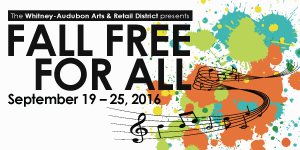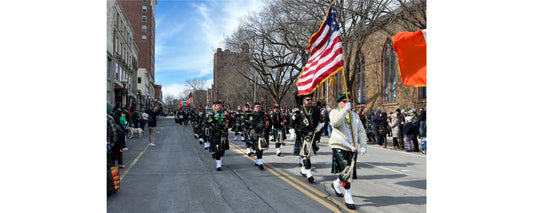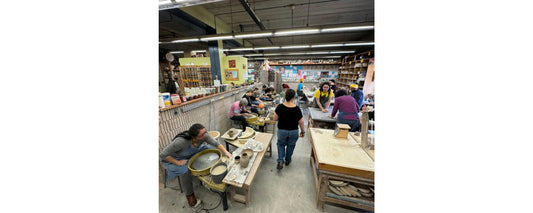Every now and then, the streets of New Haven are swept by motorized monsoons. Packs of dirt bikes and ATVs zoom down the street, moving through traffic like murmurations of starlings and sounding like swarms of piston-driven hornets. Some of their riders wear bandanas over their faces. Helmets are few and far between. They usually cruise around five deep but sometimes 50, their front wheels often rising into the air. They might spread themselves across every available lane, annoying drivers, city officials and most anyone who lives within earshot.
“No-chase” policies seek to limit high-speed police pursuits given the danger they pose to pursuers, pursued and bystanders. But even when police do give chase, riders can scatter like schools of fish evading a barracuda. Heavy police cruisers, for all their horsepower, aren’t as nimble in traffic and can’t easily jump onto sidewalks or slip under red lights.
These are the realities of what’s known as “bike life,” an increasingly common feature of the streets of many American cities. The movement is believed to have originated in the mid-1990s in Baltimore, MD, which is still considered the “bike life capital” of the US according to the UConn Report on Urban Dirt Biking (2015).
sponsored by
Since it took root in Baltimore, bike life culture has spread throughout the northeast megalopolis, a.k.a. the string of cities between Washington and Boston. Large swarms of illicit and unregistered dirt bikes and ATVs—Urban Dirt Bike Events (UDBEs), as the UConn Report calls them—are relatively new to most cities but have been markedly accelerating since 2012. In Connecticut, UDBEs have been seen in Bridgeport, Hartford, New London and, of course, New Haven.
Urban dirt bikers tend to be young men of color in their teens and 20s and often embellish their riding with tricks—chiefly wheelies. The longer a rider can hold a wheelie, the more respect the rider gets. Those with deft brake-control and balance can hold a single wheelie for many blocks, even steering between traffic on their hind wheel. Virtually all riders learn the trick on their own, and veteran riders will often tout the resulting scars with pride.
I spoke with three former dirt bike riders, Marquis “Thuggish” Santiago, Robert Smith and Kenneth Smith (no relation), all of whom once rode New Haven’s streets on dirt bikes before graduating to full-grown motorcycles. When speaking about bike life culture, they describe a loose, fun-loving but adrenaline-filled lifestyle, one that appears both more anarchic and less prone to conflict than more established motorcycle culture.
sponsored by
Dirt bikers in New Haven don’t organize themselves up into clubs or hierarchies. They have no colors or patches. There are no “gangs.” Thus there are no entrenched rivalries. Large dirt bike rides are typically leaderless and spontaneous, building up naturally through a snowball effect. Two guys might meet up for a ride across town to pick up a few others. Then a few others might join along the way. The more bikes, the more noise, and the easier it is to hear and join the group.
Spontaneous flocks like these are often comprised of riders from different, sometimes antagonistic, neighborhoods. But Marquis and Robert both note that traditional rivalries among territories and gangs become more permeable—or dissolve altogether—when riding on dirt bikes. Joined in a love of zippy motorized plastic and steel, they’re “automatic friends,” Kenneth says.
In Marquis’s experience, that kind of inter-neighborhood mixing leads to social networks that span throughout the city, making it safer for the riders to enter and hang out in areas where they might otherwise find hostility.
But that amicability is more a byproduct than a motivator of getting on a dirt bike. The young people who do it are thinking about “having fun,” Marquis says. Robert points to an added bonus: “Women: they love it.”
As fun and sexy as riding these two-wheel machines may be, they come with a great deal of risk. Providing virtually no protection, but fast and responsive in a way that creates a false sense of invincibility, dirt bikes and motorcycles are magnets for calamity.
Three years ago, Kenneth was involved in a serious accident. His helmet saved his life, but he spent 12 days in a coma, his body plugged with plastic tubes, one drilled into his skull to drain the fluid that was building up there. After that, he spent a month relearning how to chew food, among other things. “’Till this day, I’m still recovering,” he says.
Between monthly hospital checkups, Kenneth still goes around the block on a friend’s motorcycle from time to time, just to get a little thrill, but otherwise he leaves the machines alone. “I’d be damned if I’m going to hit my head again. I’ve got kids … beautiful wife, beautiful family,” he says.
“It’s true,” Marquis admits. “It’s dangerous to ride in the street. I’m not knocking that.” But he says there are bigger dangers in the city than boys on dirt bikes—shootings chief among them. The kids that participate in this risky pastime are often riding away from neighborhoods plagued by the risks associated with endemic poverty. For them, revving up to speed and lifting a front wheel into the air is an escape from the dangers that surround them on a daily basis, whatever new dangers they and others may face in the doing.
Written and photographed by Daniel Shkolnik.









